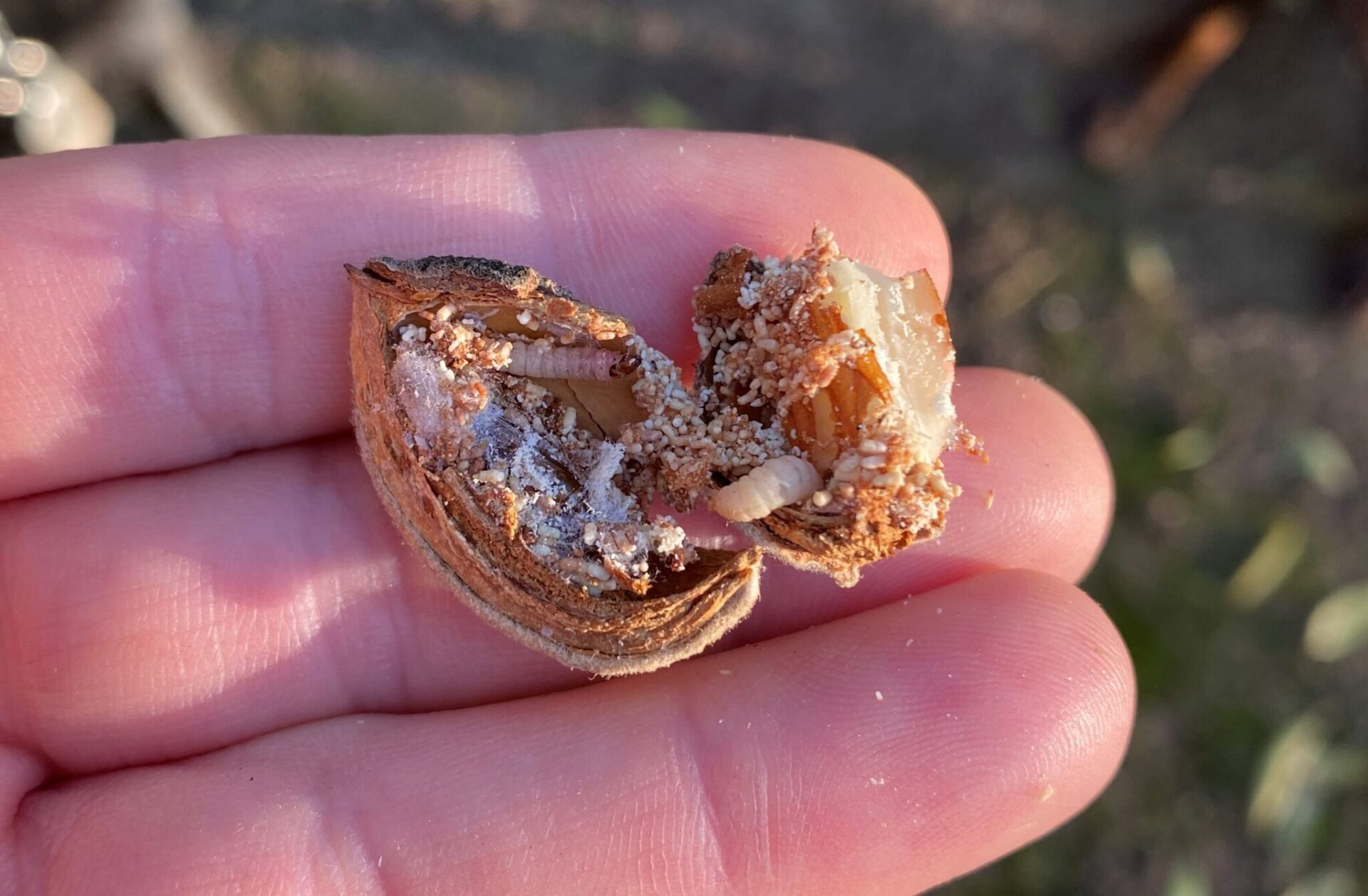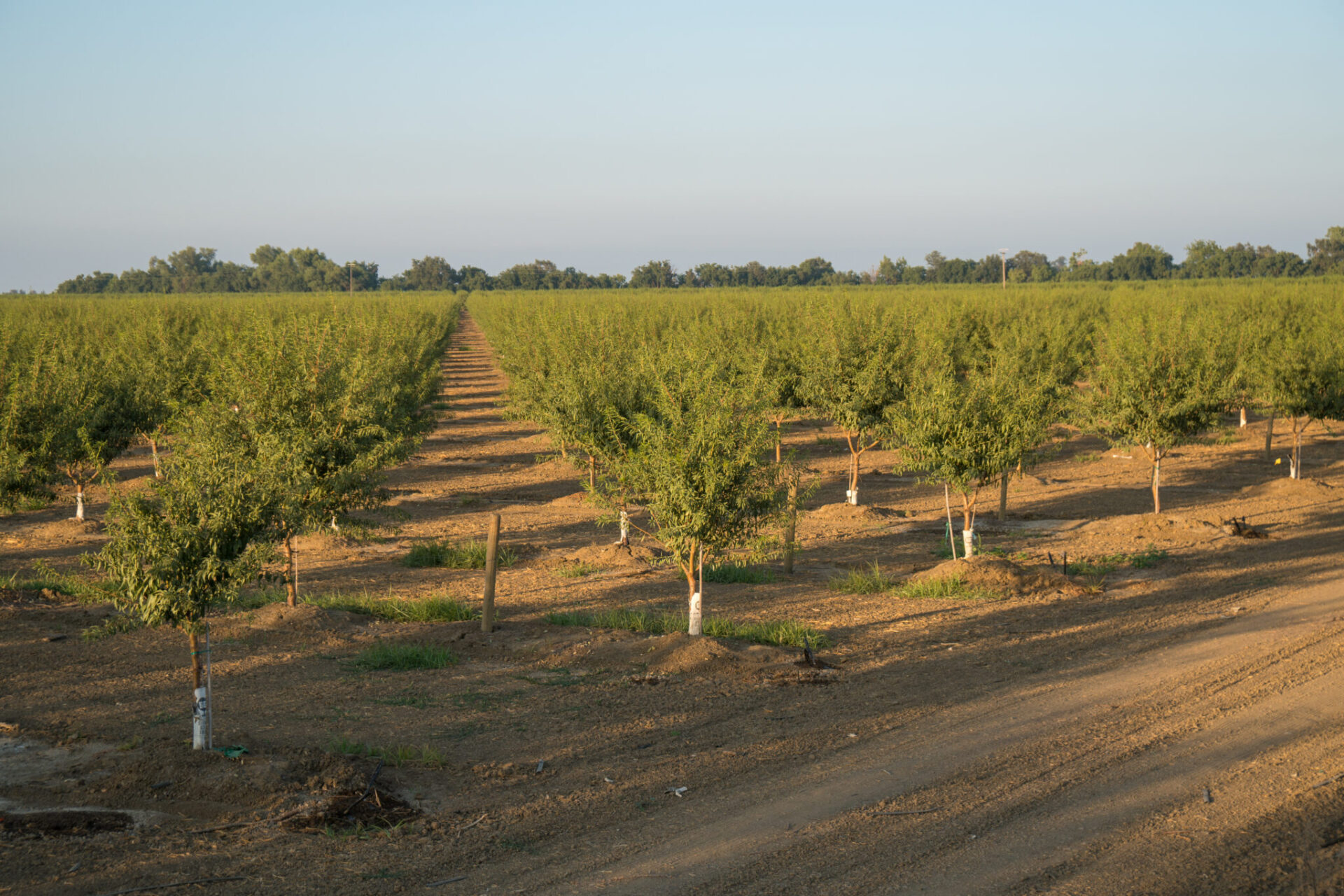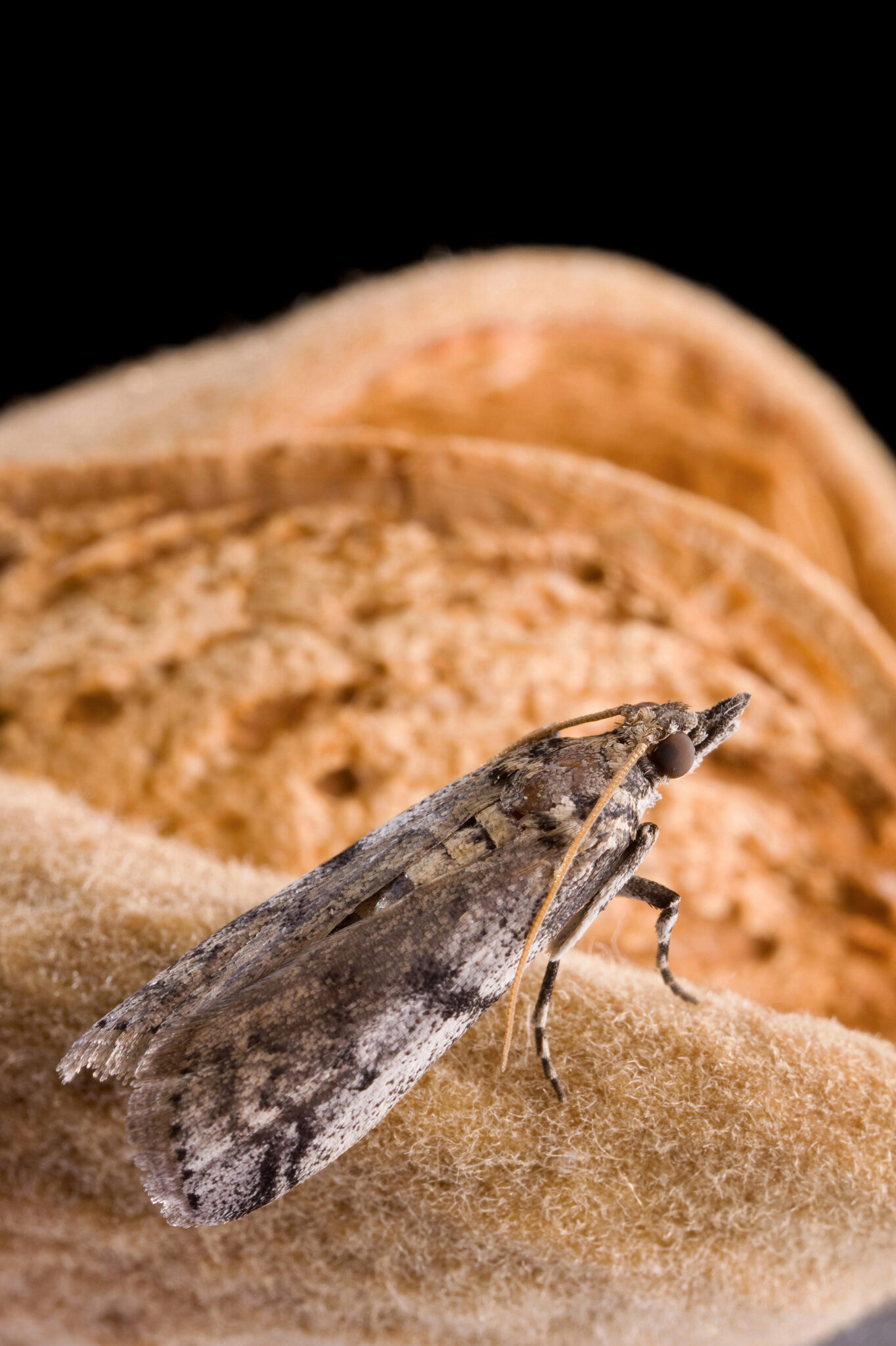
Under integrated pest management (IPM), crop fields are considered interconnected agroecosystems where long-term pest/damage prevention is best achieved through a combination of biological, mechanical, cultural and chemical controls (Stern et al. 1959). Area-wide control refers to a systematic approach to quarantine and eradicate pests, where total pest management over an entire geographic area is critical, since small fractions of an insect population left uncontrolled can promptly reverse the benefits of greatly suppressing the main pest population in a large area (Knipling 1960).
The challenge to IPM practitioners is that while independent operators focus on individual fields or orchards, many agricultural pests are highly mobile. For example, many people have at some point likely had to deal with the problem of a “bad neighbor” whose pest management efforts are inadequate and lead to spillover of pests/disease issues into their adjacent fields. Furthermore, certain management strategies are most effective when implemented over a large contiguous area, such as mating disruption. While the goal of IPM is not pest eradication, the successful suppression of highly mobile pests with technologies that work best at scale requires an area-wide approach. As such, the concept of area-wide integrated pest management (AW-IPM) has emerged over time as various groups began to effectively bring together the ideas of IPM and area-wide control (e.g. Kogan 1998, Brewer and Goodell 2012).
Approaches to Implementation
While IPM is generally implemented at the field/plot/block scale by individual growers and/or pest control advisors (PCAs) operating independently, participation in an area-wide quarantine and eradication campaign is typically mandatory, with pest management activities enforced by, or even conducted by, government entities like CDFA and/or USDA Animal and Plant Health Inspection Service – Plant Protection and Quarantine (APHIS-PPQ).
In California, some recent examples of pest eradication efforts include the light-brown apple moth (Tortricide: Epiphyas postvittana), European grapevine berry borer (Tortricidae: Lobesia botrana) and pink bollworm (Gelechiidae: Pectinophora gossypiella). In this way, independent implementation of field-scale IPM practices across multiple operations lies in sharp contrast to state-led mandatory area-wide eradication efforts. AW-IPM falls somewhere in the middle of this continuum, and as such requires a unique approach to facilitate the coordination of multiple independent growers/PCAs in order to optimize pest suppression at a regional scale.
AW-IPM programs have been operating successfully for several decades in many parts of the world, with interest in and the number of programs reaching operational level growing steadily since the 1990s (Vreysen et al. 2007). However, program success depends on the continuous and positive interactions between growers, PCAs, scientists, cooperative extension and state/county personnel, with many technical and managerial difficulties to negotiate. AW-IPM programs have worked well when they are able to leverage the existing social and economic connections between growers, usually in a specific geographic region growing a specific crop.

Navel Orangeworm
Navel orangeworm (Pyralidae: Amyelois transitella) (NOW) is the primary insect pest of California tree nuts (almonds, pistachios, walnuts) which are grown on close to 2 million acres and valued at over $8 billion annually (CDFA 2020). The larvae of NOW directly feed on the nut kernels, leading to reduced crop yield and quality, and NOW infestation is associated with aflatoxins, which are known human carcinogens heavily regulated in key markets.
Management of NOW includes crop sanitation, mating disruption, well-timed insecticide applications and timely harvest. These IPM strategies are typically implemented independently on a field-by-field or farm-by-farm basis with little coordination or communication between individual growers. The problem with this approach is that NOW is a highly mobile insect capable of flying an average of seven miles per night (Sappington and Burks 2014), and the use of mating disruption on small acreage (<40 acres) can be ineffective due to the colonization of orchards by mated female NOW. Furthermore, the benefits of thorough crop sanitation can be reduced or negated by poor sanitation in neighboring orchards, which subsequently become sources of NOW that migrate into well-sanitized blocks. For example, Higbee and Siegel (2009) demonstrated that one of the key predictors of NOW damage in almonds was proximity to pistachios, where crop sanitation is the most difficult due to the small size and durability of mummy pistachios.
While laboratory assays have demonstrated the strong flight potential of NOW, the actual timing, frequency and extent of NOW movement between orchard blocks remains unclear, although research efforts are currently underway to better characterize this (Burks et al. 2020). Regardless, NOW do indeed move between orchards (Bayes et al. 2014) and therefore some form of coordinated AW-IPM could likely improve suppression.
AW-IPM for NOW: Challenges and Opportunities
Development of an AW-IPM program for NOW presents a significant challenge, given that the California tree nut industry consists of approximately 2 million acres of orchards managed by thousands of operators spread across all 20,000 square miles of the Central Valley. Given the wide extent of this acreage, it may be more feasible to start at the county level through the creation of area-wide pest management groups or districts comprised of all growers with crops susceptible to NOW. Such organization can take a variety of forms, including self-organized associations, industry/commodity technical workgroups or even legislatively defined programs that include grower assessments (e.g. Beet Curly Top Virus Control Program, Pierce’s Disease Control Program etc.) While each approach has different challenges and benefits, such organizational efforts lay the foundation for an AW-IPM program by providing a platform for coordination. Historically, area-wide programs like this have been initiated through the combined effort of growers/PCAs, processors, UC Cooperative Extension (UCCE) and other stakeholders. Given that NOW attacks multiple crops, some form of cross-commodity organization will likely be needed.
Regional monitoring is a critical element of AW-IPM that requires the aggregation of pest trapping data across multiple farms. Depending on the program, these data can be self-supplied by growers or collected by UCCE and/or county/state personnel. There are different costs and logistics associated with each of these approaches, but recent advances in remote automated trapping may provide a low-cost alternative. For instance, a network of automated traps across multiple orchards could self-report to a database, thereby lowering program administrative costs while providing high-resolution regional data to monitor progress, or even identify “hot spots” for more targeted intervention.
The real substance of an AW-IPM program involves the selection and coordinated implementation of pest management activities across a region. To be successful, there must be some way to ensure that practices are implemented in a timely and effective manner. This “enforcement” element is typically associated with state-led quarantine and eradication programs, which usually include some form of fiscal assessment to support monitoring and enforcement costs. While not always desirable to all growers, this state-led mandatory model has the benefit of reducing free riders in the program.
In the absence of a state-led effort, some AW-IPM programs have relied on economic incentives (e.g., payments from buyers) or simply social contracts (e.g., groups of growers mutually agree on a strategy). For area-wide management of NOW, incentives from processors (i.e., bonus payments) may be a key tool to encourage participation, especially since reduced NOW infestation is of mutual benefit to them. At the same time, this approach doesn’t always guarantee full participation and is subject to market fluctuations. Finally, in some cases, self-organized groups of growers have simply partnered with UCCE or other technical providers to develop and implement programs that primarily rely on self-enforcement. For these programs, the USDA Environmental Quality Incentives Program (EQIP) may provide some mechanism for financial assistance for certain IPM practices, such as mating disruption, through practice code 595 Pest Management Conservation Systems.
NOW is a highly mobile pest that attacks multiple high-value commodities, and mating disruption is a key non-chemical strategy for NOW control that works best over large contiguous acreages. Taken together, these elements provide a strong justification for development of an AW-IPM program for NOW. At this stage, the key is determining the best organizational form, scale and incentives to catalyze an effort like this. There are many ways to structure an AW-IPM program, and the best approach can likely be achieved by forming partnerships between industry, UCCE and county/state entities to develop, implement and measure the success of a program.

Citations
Bayes, S. K., Hellerstein, M. K., Fitch, M., Mills, N. J., & Welter, S. C. (2014). You are what you eat: Fatty acid profiles as a method to track the habitat movement of an insect. Oecologia, 175(4), 1073–1080.
Brewer, M. J., & Goodell, P. B. (2012). Approaches and Incentives to Implement Integrated Pest Management that Addresses Regional and Environmental Issues. Annual Review of Entomology, 57(1), 41–59.
Burks, C. S., Rijal, J. P. & Wilson, H. (2020). Movement and Monitoring of Navel Orangeworm (Amyelois transitella) in Walnuts: 2020. Annual Report to the California Walnut Board.
CDFA – California Department of Food and Agriculture (2020). California Agricultural Statistics Review 2019-2020. http://www.cdfa.ca.gov/Statistics/
Higbee, B. S., & Siegel, J. P. (2009). New navel orangeworm sanitation standards could reduce almond damage. California Agriculture, 63(1), 24–28.
Knipling, E. F. (1960). Use of Insects for Their Own Destruction. Journal of Economic Entomology, 53(3), 415–420.
Kogan, M. (1998). Integrated Pest Management: Historical Perspectives and Contemporary Developments. Annual Review of Entomology, 43(1), 243–270.
Sappington, T. W., & Burks, C. S. (2014). Patterns of Flight Behavior and Capacity of Unmated Navel Orangeworm (Lepidoptera: Pyralidae) Adults Related to Age, Gender, and Wing Size. Environmental Entomology, 43(3), 696–705.
Stern, V. M., Smith, R. F., Van Den Bosch, R., & Hagen, K. S. (1959). The Integrated Control Concept. Hilgardia, 29(2), 81–101.
Vreysen, M. J. B., Robinson, A. S., Hendrichs, J., & Kenmore, P. (2007). Area-Wide Integrated Pest Management (AW-IPM): Principles, Practice and Prospects. In M. J. B. Vreysen, A. S. Robinson, & J. Hendrichs (Eds.), Area-Wide Control of Insect Pests (pp. 3–33). Springer Netherlands.















